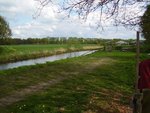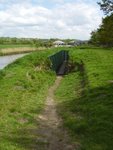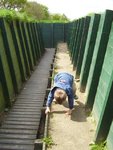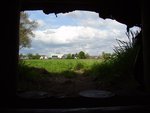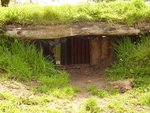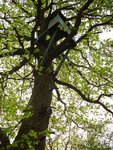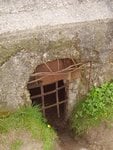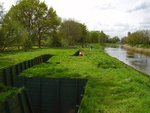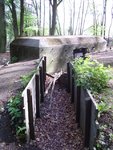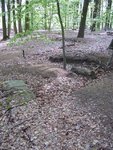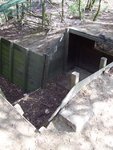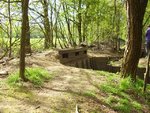Last week I was on holiday in Gelderland and did some hiking. Suddenly I found myself at a little canal, which had an enormous dyke on one side (much to big for the little canal) and no dyke on the other side, which is weird. It turned out to be the notorious Grebbe linie dyke, the line where the Dutch hoped to stop the German advance in 1940. The place were I was was between Woudenberg and Scherpenzeel. The German Army did a major attack on the line there on May 13th 1940. Although vastly outnumbered (3.5 batallion in total against the whole 227th German division) and without aid of airforce or big artillery, the line held. The Germans stopped attacking when the Dutch surrendered after the bombing of Rotterdam. Today, we can only find a bunch of small bunkers on the dyke. Some people reconstructed a part of the trench on the dyke, so we can see what it looked like. futhermore they reconstructed a lookout post in a tree.
The photo's:
1. the dyke as it is now
2. The trench
3. My son in the reconstructed trench
4. View on Scherpenzeel from a MG position
5. The MG position from outside
6. Looking towards the watertower of Woudenberg from where the Dutch saw the enemy coming
7. The little bunker (kazemat) took a direct hit on the gun position
8. The lookout post in the tree
The photo's:
1. the dyke as it is now
2. The trench
3. My son in the reconstructed trench
4. View on Scherpenzeel from a MG position
5. The MG position from outside
6. Looking towards the watertower of Woudenberg from where the Dutch saw the enemy coming
7. The little bunker (kazemat) took a direct hit on the gun position
8. The lookout post in the tree

